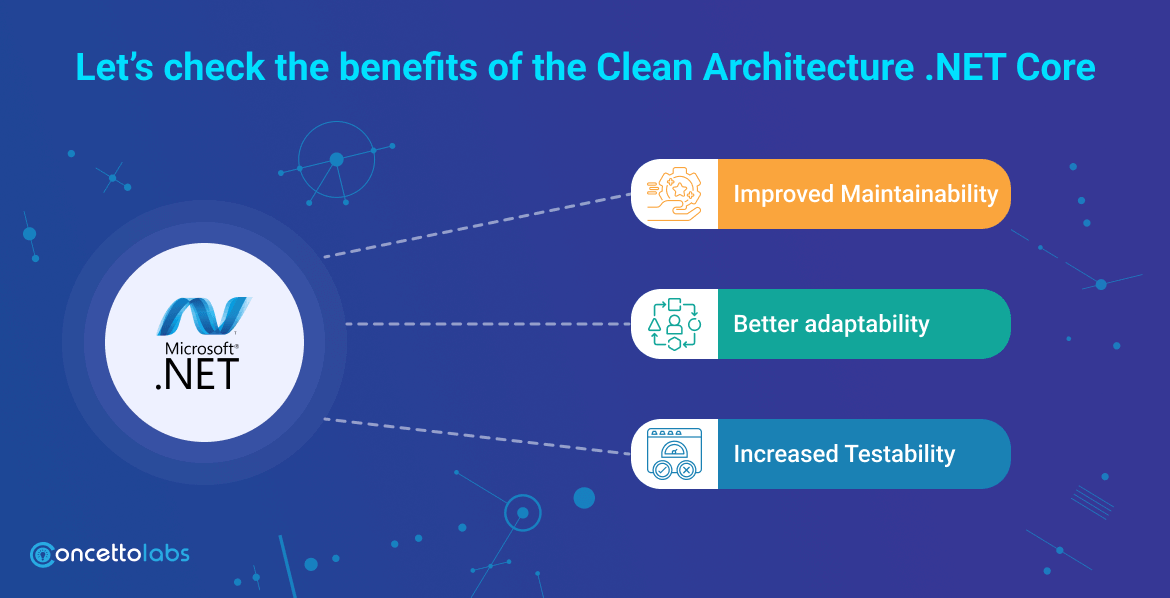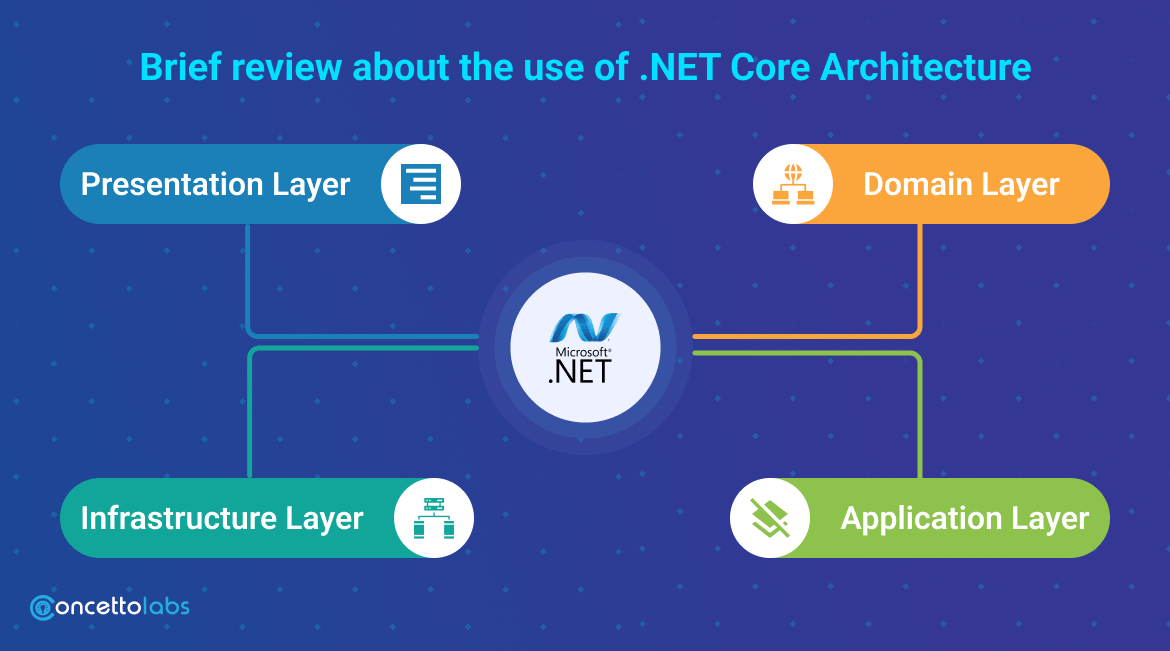
In the business of Information and Technology, Good architecture is the most significant aspect of development. If we talk about the advantages of good architecture for .NET Core Development – then, it helps in creating scalable, modular, and maintainable applications. The architectural design may vary according to the details of the language. However, one thing that is common among all is Separation of Concern. It can be achieved by splitting the entire application into multiple layers. Clean architecture .net core helps to keep the code under control without any confusion. The main reason behind the Clean Architecture is to create a code without any dependencies. By doing this, we do not require changing the core of the application while changing the framework version, database, and UI-related code.
Let’s Work Together and Create Something New.
Hire our DeveloperLet’s check the Benefits of the Clean Architecture .NET Core

1. Improved Maintainability
By separating all the layers into applications, one layer allows you to change on the other without getting affected. Thus, Clean Architecture applications can be maintained easily.
2. Better Adaptability
A clean architectural design makes it easy to scale an application as it grows and changes. You can add new features, make changes in existing functionality and fix bugs without altering the rest of the application.
3. Increased Testability
It is easy to test Clean Architectural applications. By splitting the application into separate layers, you can easily write automation tests for each layer and verify that changes made into one layer functionality are not breaking the other one.
What is Clean Architecture .NET core?
Clean architecture is a design pattern that separates an application based on its role into different layers. With this, you can organize your code into testable, reusable, and independent components. This architectural pattern emphasizes the separation of concerns and divides the application into distinct modules. The idea behind layered .NET core architecture is to build a structure that makes an application easy to understand and manage.
Brief Review About the Use of .NET Core Architecture

To implement Clean Architecture with ASP.NET, we can divide the main application into different primary layers:
1. Domain Layer: In the domain layer, the project includes value objects, entities, and domain services.
2. Application Layer: During the Application layer architecture, the implementation of application services, data transfer objects, and mappers are managed. The reference of the application layer comes from the domain layers.
3. Infrastructure Layer: Implementation of data, logging, access, email, and other communication processes managed by the Infrastructure layer. The reference comes from Application layers.
4. Presentation Layer: This is the main project layer that performs the implementation of DotNET core web API.
Hire .NET Developer for Building Clean Architecture
Hire .net Core DeveloperCommon ASP.NET Architecture vs Clean Architecture
When we talk about the traditional .NET Architecture application, then it is always deployed as a Single Unit. A single or executable web-based application runs in the IIS app domain. It is the simplest approach of any development model. The same model is also used in many internal and external small applications. However, rather than using single-unit deployment, business applications benefit from the logical separation of the main system into several layers.
A monolithic application is a classic example of a Single unit application. While performing the operations, this type of application runs within the process of self. It interacts with other data or service layers. Although, they are entirely self-contained in terms of functionality and behavior. If we want to scale the application horizontally, the entire application needs to be duplicated across multiple VMs.
As complexity increases in the application, we need to opt for breaking down the application’s responsibility. This can help us in organizing a large codebase, as it follows the separation of actual principles. It follows don’t repeat yourself. Thus, excluding the code organization, we don’t require duplicating the whole application.
A monolithic solution always has some disadvantages. Let’s say, when the size of the project gets increased, the complexity of managing different files becomes tough work. On the other hand, if we work with a layered architecture, we can divide the application into a clean architecture layer. This .NET architecture works on the encapsulation method. While working on any particular layer, it doesn’t affect the other one. Because of reducing the layer dependencies, we can reduce the effect of changes on the entire application.
Summary
Clean Architecture is the right way to organize complex applications. It helps in separating the dependencies and keeps them distinct from business logic and the application’s domain model. Our .NET Core developers can help you to work on 3-layer API architecture. Concetto Lab assures you to get your application started correctly in parallel with your requirements.







 Indonesia
Indonesia
 Botswana
Botswana
 USA
USA
 Italy
Italy
 Panama
Panama




 USA
USA UK
UK Saudi Arabia
Saudi Arabia Norway
Norway India
India Australia
Australia